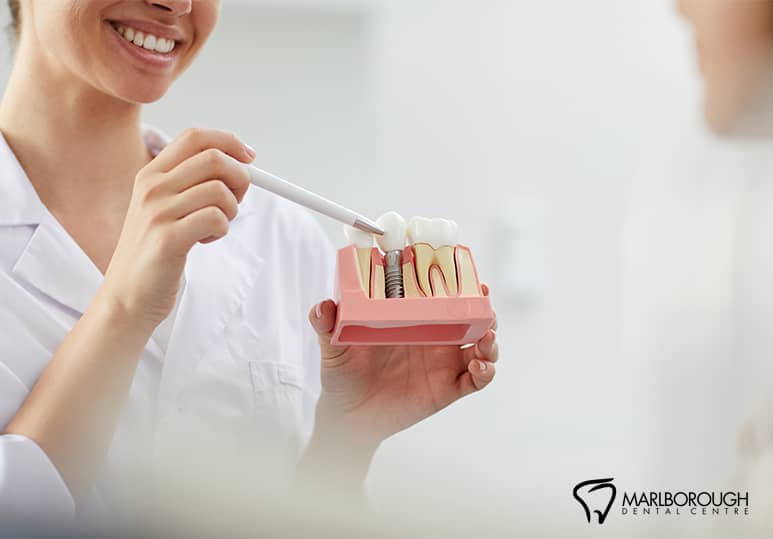The Dental Implant Process
Consultation
Before you can have a dental implant, you will need to be assessed to ensure you are a viable candidate. To determine this, you will need a comprehensive dental exam where you will have to have x-rays taken and a model of your teeth and jaw created. You will also have to answer questions about your health including any medications you are on or any heart conditions or orthopedic implants you have. Your dentist will also examine the health of your jawbone. To be eligible for dental implant surgery, you must have adequate jawbone density and not be suffering from periodontal disease.
Preliminary Treatment
If your jawbone is too weak for an implant and you need bone grafting, this will have to be done first. After any grafting, you will need time to recover so that your jawbone is strong enough for the implant. Healing from a jawbone graft can take between 3 and 9 months. If you need a damaged tooth pulled before an implant is placed, this can often be performed during the same procedure as the implant and therefore won’t require any extra recovery time.
Implant Body Placement
When you’re ready for implant surgery, the dentist or dental surgeon will make an incision in the gums and drill a small hole into the jaw. Once this hole is created the body of the implant will be inserted. The body of an implant is a small cylindrical piece that is inserted into the jaw so that the jawbone can grow around and fuse with it. After the implant body is placed, you will need approximately 3 to 6 months so that the jaw can heal and fuse with this crucial piece.
Abutment Placement
After the implant body is securely fused to the jawbone, a small piece called an abutment will be placed inside of the body. To place this abutment, another incision will have to be made in the gums that have since grown back and covered the top of the body. The abutment will sit slightly higher than the body and will be visible above the gum line while healing. The gums will need time to heal around this section of the implant, often requiring a healing period of 10 to 14 days.
Attaching The Crown
Once the gums are healed, the crown can be placed. This is the section of the implant that looks like a tooth and it is the only portion that will be visible. If your implant is detachable, a metal mount will be cemented onto the abutment and the artificial tooth will simply snap into place. If your implant is permanent, then the artificial tooth will be cemented or screwed onto the implant abutment. Once this final step is completed, you will have your brand new tooth!
Dental Implants In Calgary
If you are missing one or several teeth and want to get your beautiful, full smile back, dental implants can help. Dental implants are durable, permanent, and easy to care for, so you can smile, chew, and speak with confidence. At Marlborough Dental Centre, our Calgary dentists can carefully assess your teeth, jaw, and gum health to ensure you are eligible for dental implants. For those who are, we will proceed with dental implant surgery to restore your smile. If you are not eligible, our expert Calgary dentists will find another dental service to replace your missing tooth. To schedule a dental implant consultation, contact Marlborough Dental Centre in NE Calgary at 1-403-248-2066 or fill out the online contact form and get smiling again.
FAQ
Q: Can I receive dental implants if I’m missing several teeth in a row?
A: Yes you can. Dental implants can be attached to a dental bridge, meaning that your implanted tooth will have another tooth connected beside it so that you can fill more than one space without the need for every tooth to have its own implant.
Q: Why might I need a dental implant?
A: Missing one or more teeth does more than affect aesthetics; missing teeth can cause teeth to shift in the mouth, cause jawbone density loss, create an aged look, and can impact health if it affects what foods you eat.
Q: If I’m missing a tooth, are dental implants the only solution?
A: No, other dental services can replace a tooth including a dental bridge or a retainer with one or more false teeth attached. If you’re missing one or more natural teeth, discuss your options with your Calgary dentist.




